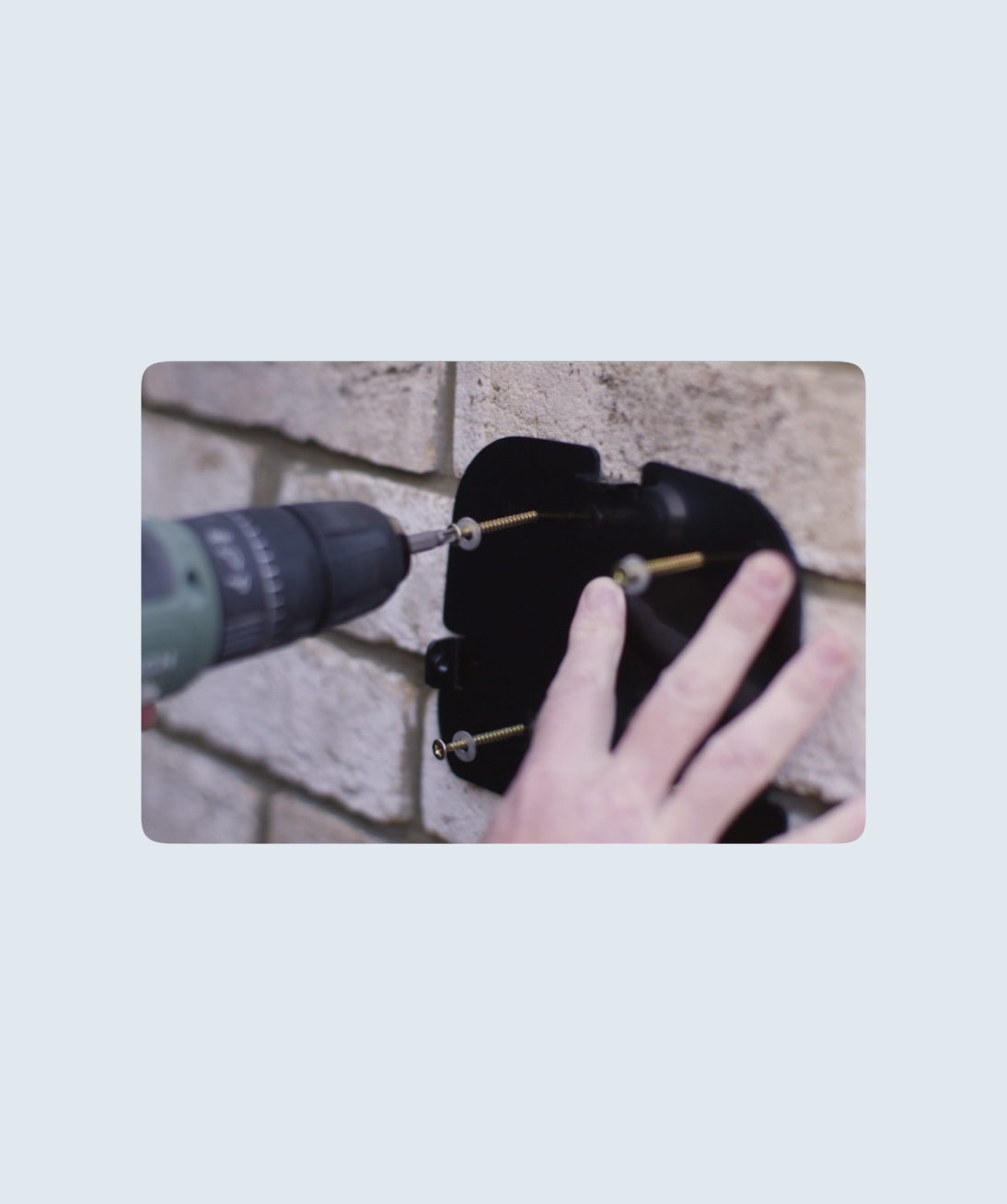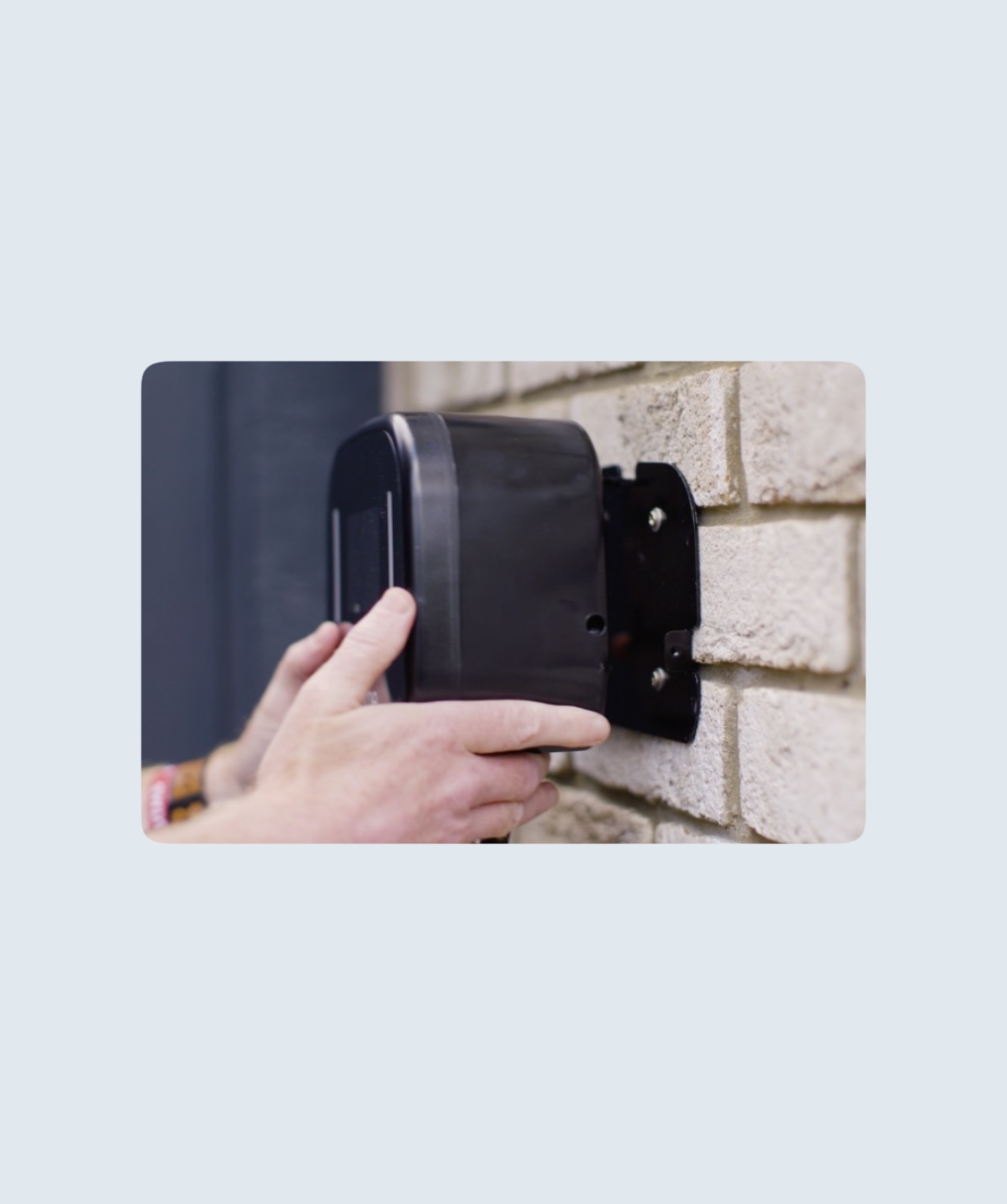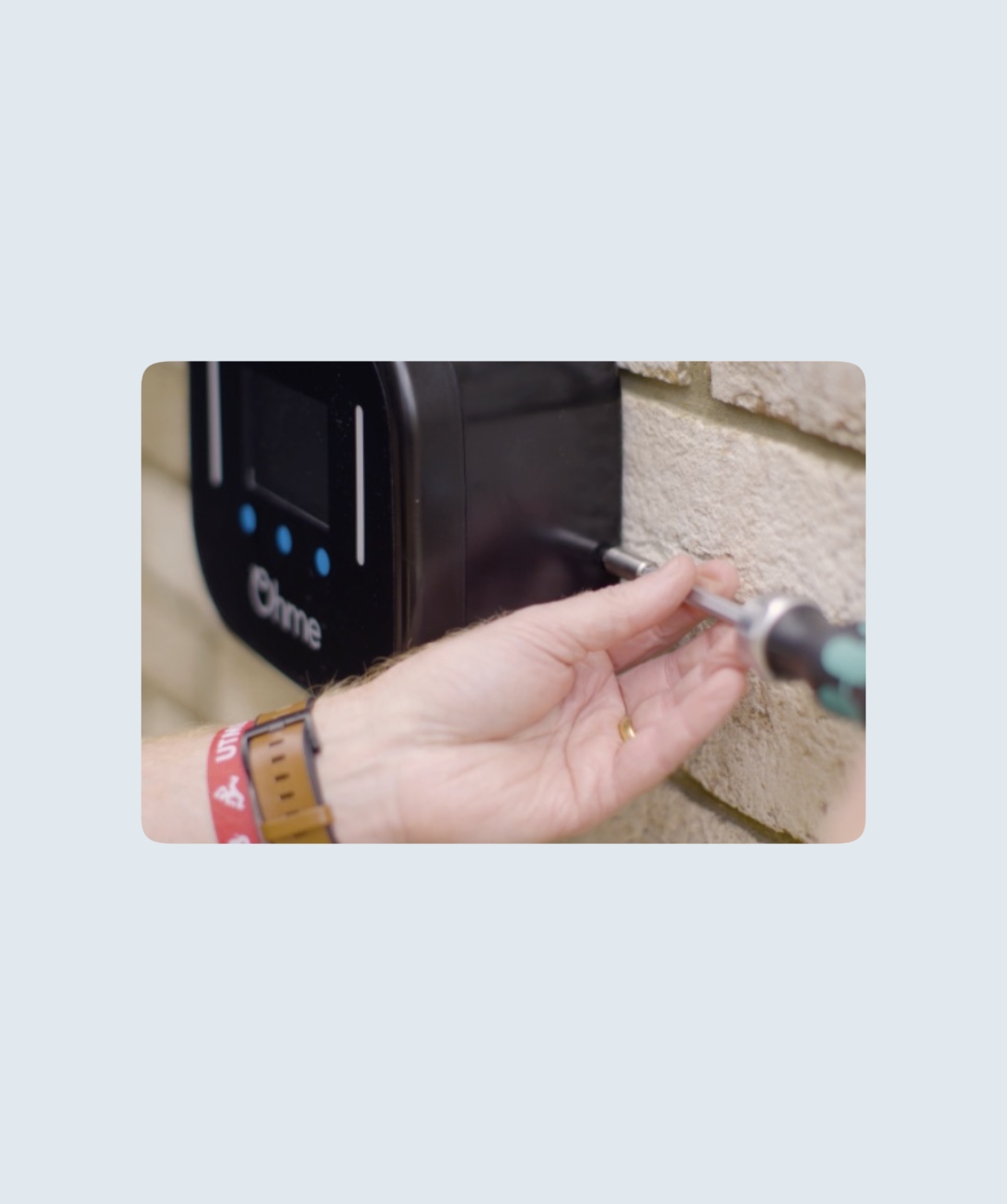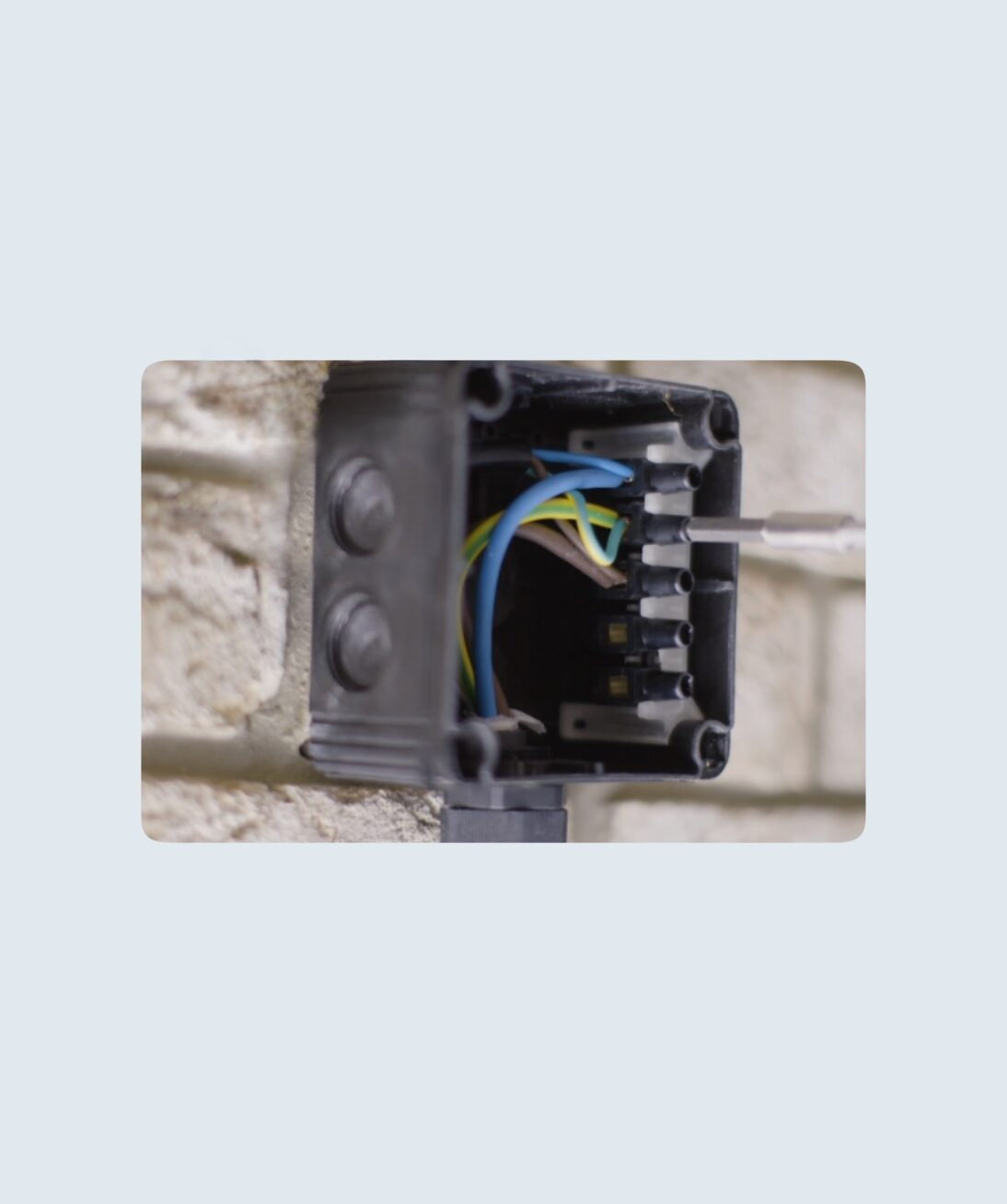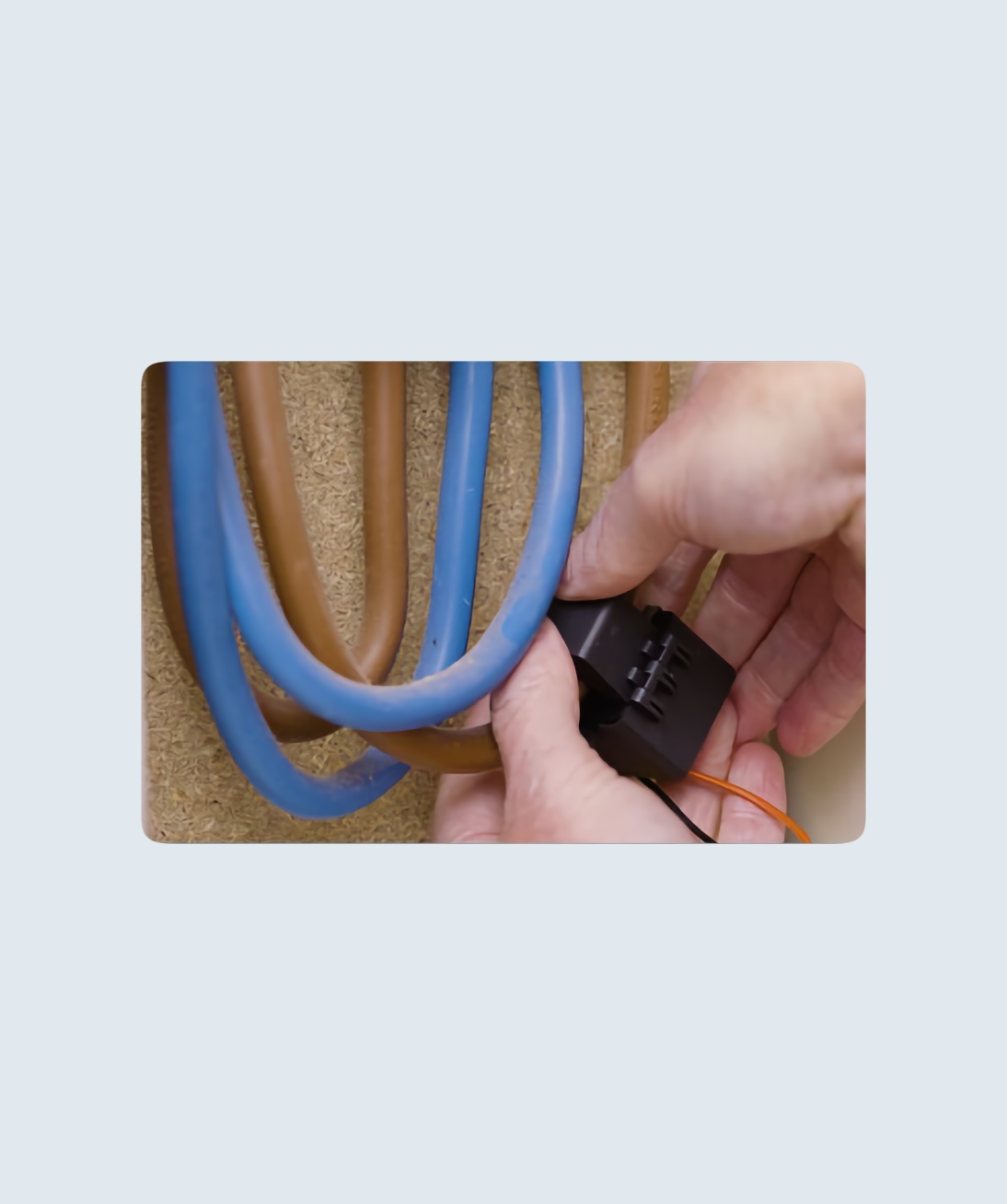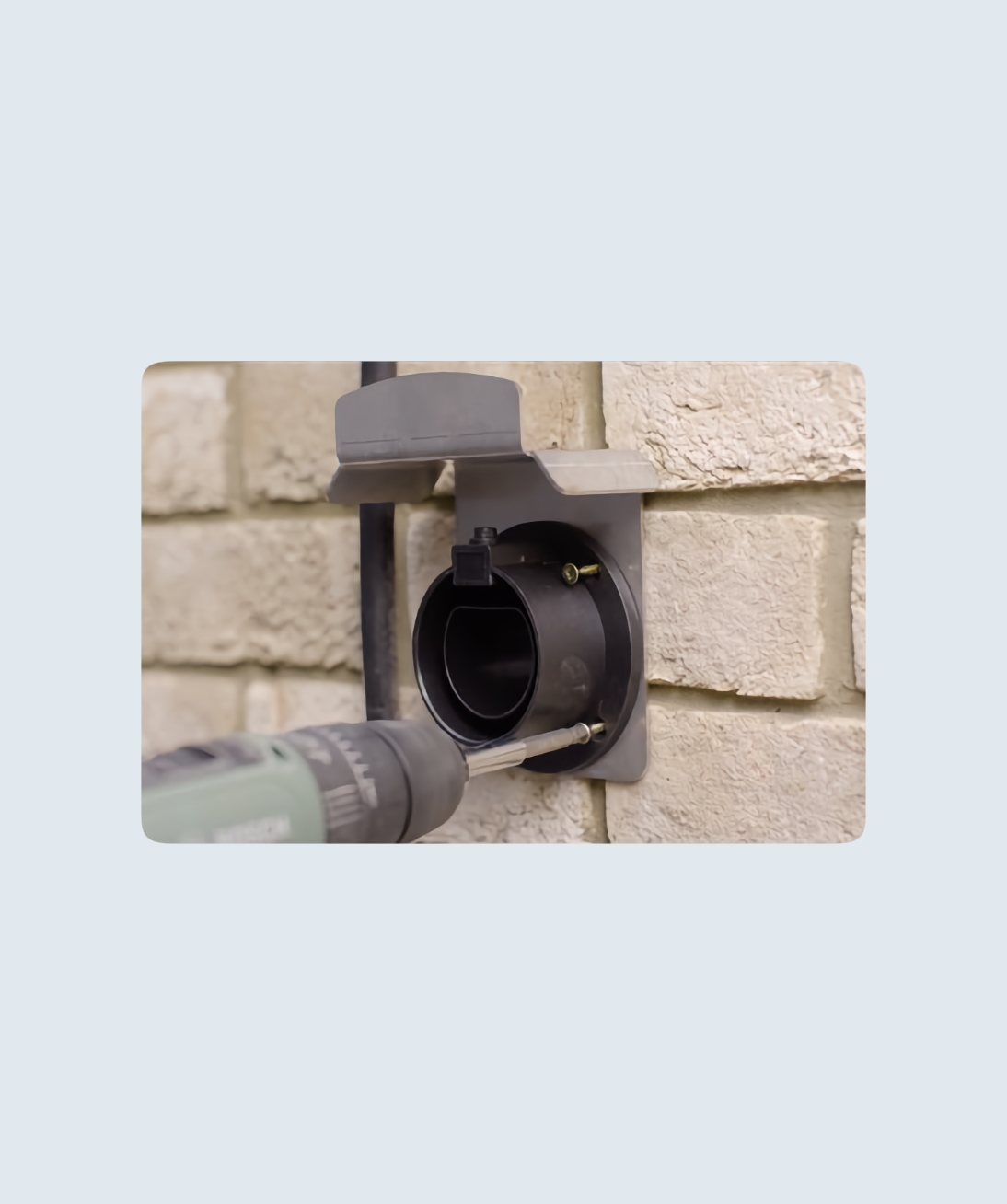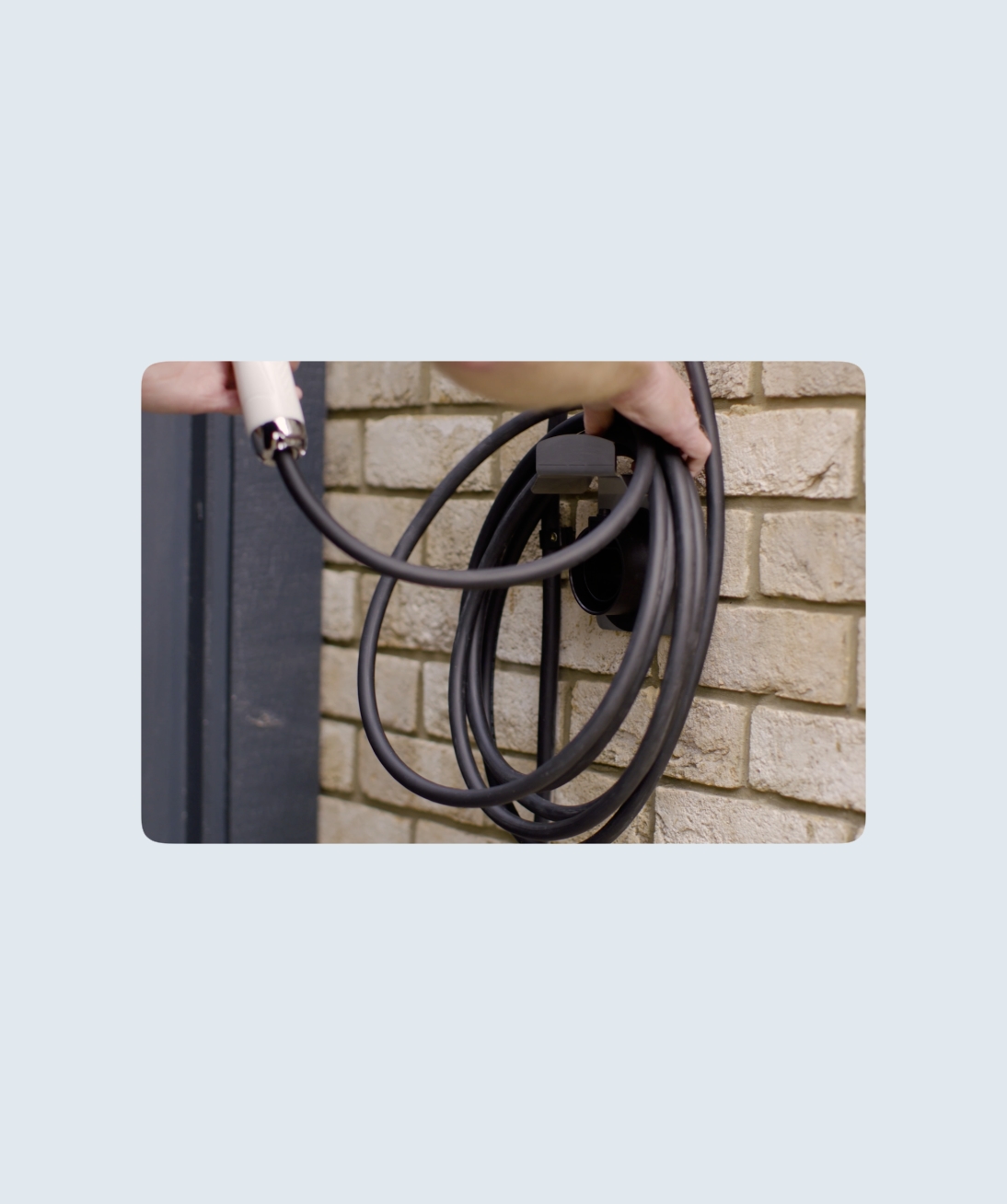The Ohme Home Pro is supplied with a one metre fixed input cable/flying lead requiring termination on-site to a suitable junction box, isolation switch, or mini-CU (not supplied). The flying lead conductors are 6mm2 copper, the overall diameter is 15.2mm, suitable for a No. 6 cable cleat.
To connect, typically an installer will either:
· Install a junction box at ankle height
· Feed the input cable through a wall and terminate on the other side
Note: The junction box needs to be rated to at least 32A, have sufficient IP rating for the location, and have space for a three-way terminal block (no load balancing) or five-way terminal block (with load balancing).
